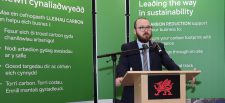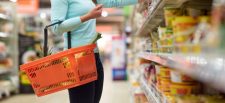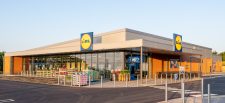Market research firm Kantar has released its latest supermarket share update, reporting the biggest sales period of the year so far as grocery sales were on the rise.
Over the four weeks to 3rd November, take-home sales at the grocers rose to £11.6 billion, which was the biggest sales period of the year so far.
The rise in sales coincided with a jump in the number of shopping trips made by households, hitting a four-year high at 480 million.
Fraser McKevitt, head of retail and consumer insight at Kantar, commented: “October 2024 was the busiest month for the supermarkets since March 2020, when people were preparing for the first national lockdown. Trip numbers have been going up gradually for some time, but this steady march hasn’t reached pre-Covid levels of shopping frequency just yet. The average for each household is slightly over four trips per week.”
Festivities see boosted confectionary sales
McKevitt continued: “Many of us got into the spooky spirit last month, as 3.2 million households bought at least one pumpkin. Confectionery spending also got a boost to £525 million in October as sales of chocolates and sweets both went up, climbing by 13% and 7% each.
“What’s interesting this month is the number of households who are already stocking up the cupboards for the big day in December. Some people think Christmas ads hit our screens too soon but it’s clearly important for retailers to set out their stalls early. 648,000 shoppers have already bought a Christmas cake, while 14.4% of households picked up mince pies in October.
“With Black Friday on the horizon, the grocers will be hoping to capture a slice of the action there too. In the week up to 26th November last year, online and offline sales for typical Black Friday categories across all high street retailers were £1.6 billion higher than during an average week in 2023.”
Grocery price inflation was 2.3% during this period, up slightly on September’s figure but still within typical levels. Kantar noted that the rate has now been below 3% every month since the early summer, and promotional activity by the grocers is helping to keep prices down and supporting sales of branded goods in particular.
McKevitt said: “Spending on deals has been going up consistently for the past 18 months and it now makes up 28.6% of all sales. Offers are helping to lift branded sales especially. The growth gap between brands and own-label is the biggest it’s been since February 2021, sitting at 4.9% and 2.7% apiece. We’ll be keeping a close eye on those numbers to see whether the gap continues to widen in the run up to Christmas.”
Lidl remains fastest growing bricks and mortar retailer
Ocado sales were boosted by 9.5% over the 12 weeks to 3rd November 2024. With sales up by 7.4%, Lidl was the fastest growing retailer with a bricks and mortar presence for the 15th period in a row, continuing this run into a second year. It secured 326,000 additional shoppers this period, more than any other retailer, and saw particularly strong fresh produce sales growth at 22%.
With sales up across all its store formats and online, Tesco’s sales rose by 4.6% taking it to 27.9% of the market, up 0.6% on last year. Spending through the tills at Sainsbury’s climbed 4.4%, making its overall share 15.5%. Sainsbury’s saw a rise in both shopper numbers and trips this period.
Asda’s hold of the market is now 12.5%. Morrison’s sales grew by 2.4%, outpacing the market average for the first time since June 2021. Its share of take-home sales remains at 8.6%. Aldi held its share of the market steady year-on-year at 10.4%.
Co-op and Waitrose’s shares sit at 5.7% and 4.6% respectively. Iceland now makes up 2.2% of the market, the same proportion as a year ago.









